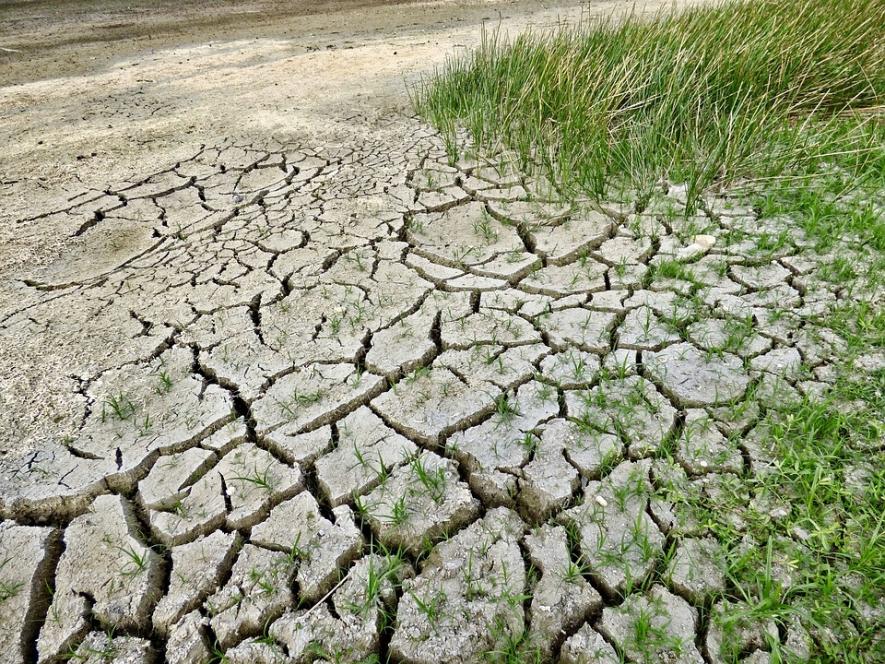Forests, Climate Change and the Peasantry

The World Economic Forum’s Global Risk Assessment, 2018, has identified climate change as one of the main challenges impacting on the economic well being of the current capitalist economy. In its report, it states about the failure of “governments and businesses to enforce or enact effective measures to mitigate climate change”. The report identifies heightened environmental risks as one of the main factors that will adversely impact the interests of global business. It therefore reinforces the view that “mitigation of climate change” can be a profitable activity and can provide developing countries the much needed capital that they require for climate friendly developmental activities. This perspective puts the burden of climate change mitigation on natural resource rich countries and maintains the domination of the developed capitalist world on the policies of the Global South. This influence is a result of a neo-liberal model of climate change prevention which is largely based on the promotion of financialisation and corporatisation of nature.
GLOBAL MARKETS AND FOREST CARBON VALUE CHAINS
Broadly speaking the term ‘financialisation of nature’ refers to the use of financial instruments (such as foreign aid and investments) to pressurise the countries of the Global South to meet the goals of global climate change agreements. These investments and aid targeted forest rich areas because deforestation was considered one of the major drivers of climate change. Under the REDD+ programme negotiated by the United Nations in 2008, it aimed at facilitating ‘green’ investments in the countries of the South in order to ensure sustainable development. One of the stated objectives of this programme was to induce the all-round development of ‘beneficiary communities’ along with saving the forests for reducing the temperature of the Earth. The ‘forest carbon projects’ would pay the communities for their services in helping to conserve forests, and in return get rights carbon stocks, which can be then traded in the markets.
As is well known, the ‘beneficiary communities’ consisted largely of the peasants and agricultural workers in resource rich areas, and the whole system of REDD+ was meant to integrate them in the forest carbon supply value chain. This value chain essentially meant that the company or the project holder invested money to conserve forests and create carbon stocks which could then be converted into market exchangeable carbon credits. In return the peasants and forest dependent people would receive some payments for the services that they provided in order to keep the forests intact. Such services have been termed as ‘payments for ecosystem services’. The ‘Payments for Ecosystem Services’ programme was largely contracted between donor led organisations and NGOs who implemented the project in several parts of Africa, Latin America and South East Asia.
However, before such services were contracted governments were funded to setup an institutional framework to ensure the goals of REDD+ were met. The activities leading to these were termed as ‘REDD readiness activities”. These readiness activities are largely institutional and infrastructural activities which have been used by governments to augment their depleting finances. As per the latest data, more than two thirds of the funding between 2009 and 2014 supported such activities. A major portion of this funding or 55 per cent was used to fund domestic governments for institutional strengthening whereas another 35 per cent was used for ‘engaging with stakeholders’ through NGOs many of who were big international NGOs. It is even more interesting that only 7 per cent of the projects were in fact implementing payments for verified ecosystems services. This shows that a large part of the REDD+ finance has not even ‘trickled down’ to the affected peasants and agricultural workers.
WHERE THE PEASANTRY STANDS IN FINANCE FLOWS?
Broadly speaking REDD+ finance flows can be tracked through some general trends which highlight who are the main beneficiaries. Data from REDDX, a REDD+ finance tracker for 12 countries shows the major beneficiaries of the financial flows were domestic governments and International NGOs were the biggest gainers of the finances. The countries studied are Brazil, Colombia, Ecuador, Ethiopia, DR Congo, Liberia, Indonesia, Ghana, Mexico, Peru, PNG, Tanzania, and Vietnam. In many cases like Brazil, Democratic Republic of Congo and Columbia, Norway, Germany and the United States were the major donors who also bypassed governments and directly worked through international consultancies and NGOs. Apart from this, the donor agencies also include multilateral agencies, international consultancies and private sector and private foundations like Microsoft, Nestle, Packard, Moore, Walt Disney, Cargill and others. A total of $ 3782.8 million was transferred to these countries by all donors together between 2009 and 2014. Out of this, only $ 317.93 million or 8.4 per cent was transferred to “community-based organisations” which are meant to be receiving payments for ecosystem services. It must be however emphasised that 98 per cent of this fund or $ 603.8 million was transferred in Mexico itself. The other four countries (Brazil, Tanzania, Peru and Vietnam) where these funds were transferred the percentage was less than 0.5 per cent of the total money received. Though the table shows that ‘community-based organisations’ in Mexico got a total of $ 603.8 million, a closer analysis reveals that only $ 297.5 million was funded from the REDD+ provisions. Hence the REDDX overestimates the contribution of REDD+ to local development in Mexico.
Further it should also be noted that the payments to ‘community-based organisations’ and local NGOs were not direct in the sense that these agencies were not the first recipients of the funds and had to build direct connections with international consultancies, NGOs and in some cases even donor governments in order to access funds. In this sense ‘community-based organisations’ were integrated into the forest carbon stock supply chain without benefiting the local peasantry in any substantial way. In the light of this, it is not surprising that there is no systematic database on ‘payments for ecosystems’. One particular data base of 446 projects shows that in at least 176, no payments were made at all. In 179 projects local people were paid through purchase of carbon stocks, thus integrating them into the carbon credit market. In most such cases, projects of eco-tourism were instituted and the project developer also partook of eco-tourism profits. In other words, the payments were largely in terms of ‘wages’ for work but shown as payments for ecosystem services. Hence it is safe to surmise that REDD+ has been used as a mechanism to develop a forest carbon supply value chain through which private sector harnesses super-profits in the market of carbon credits.
In this sense, REDD+ has turned out to be a new method of capitalist accumulation – one that is aiding the system to overcome its financial crisis. However, this does not mean that challenges arising out of deforestation are not real. It only implies that REDD+ does not deal with these challenges which mainly include regulating the diversion of forest lands for industrial purposes, the corporate overuse of coal and wood-based fuel, the loss of biodiversity to the promotion of industrial plantations etc. Land use planning within forests has to take these major drivers of forest degradation into account and regulate the use of forests for super-profits. The REDD+ in fact does the opposite of this: it puts the burden of the blame for deforestation on the peasantry rather than the profiteering corporate houses. Hence the struggles for forest rights must also be accompanied by viable alternatives for the sustainable use of forests which focus on the needs of the local people and also limit the influence of the market and corporate sector in forested regions.
Disclaimer: The views expressed here are the author's personal views, and do not necessarily represent the views of Newsclick.
Get the latest reports & analysis with people's perspective on Protests, movements & deep analytical videos, discussions of the current affairs in your Telegram app. Subscribe to NewsClick's Telegram channel & get Real-Time updates on stories, as they get published on our website.
























